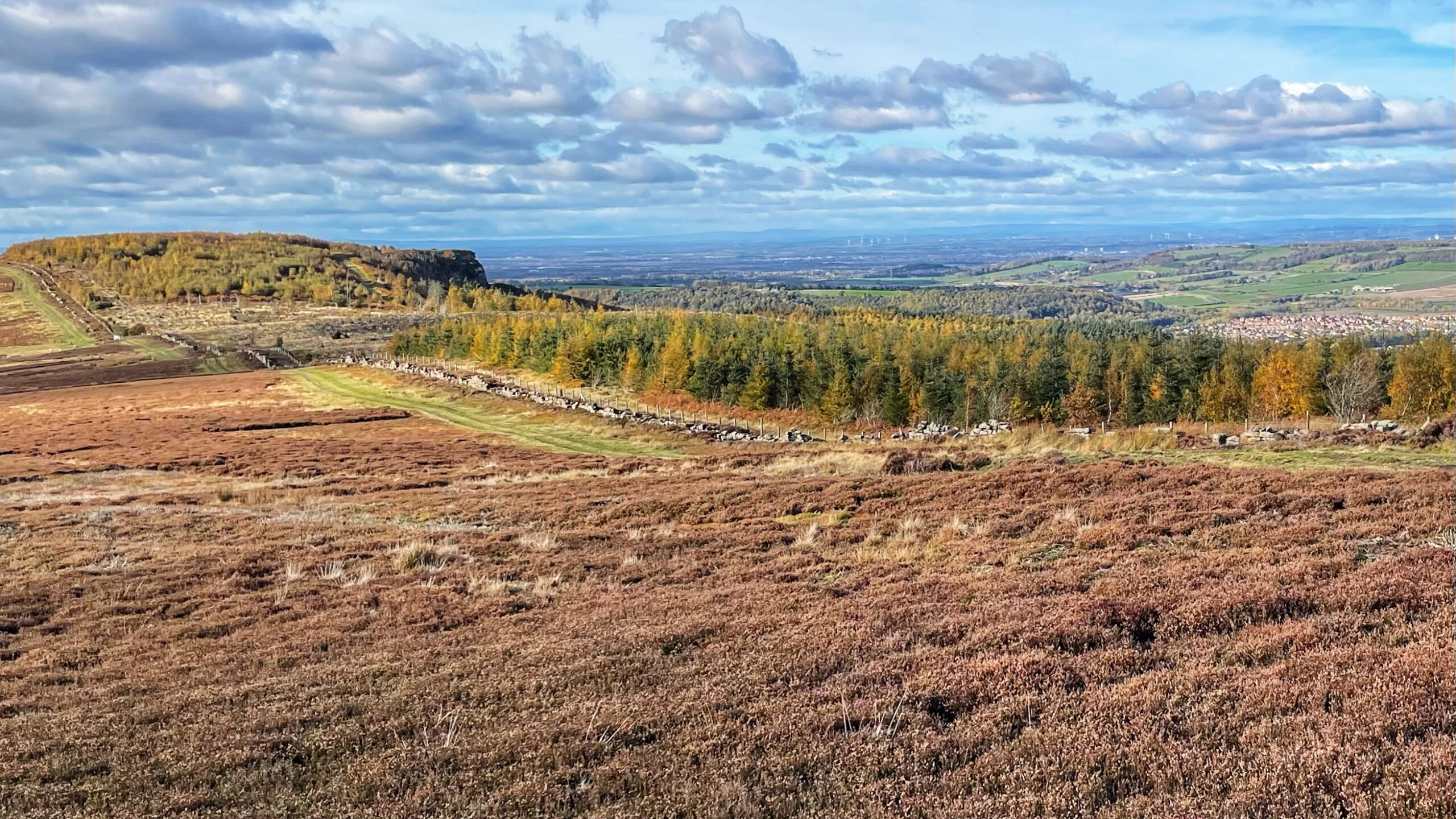From Gisborough Moor, Highcliff Nab rises starkly above the Cleveland Plain, and it is easy to imagine the lives of its earliest visitors, the Mesolithic hunter-gatherers who roamed here during six millennia before 4000 BC — 900 years before Stonehenge was even thought about.
Highcliff Nab is recognised as a key site of Early Mesolithic activity, dating back to about 8500 BC. Excavations made before the laying of the modern stone path uncovered a dense spread of flint — waste cores, blades and microliths, many burnt — evidence of camp-fires and tool-making. The absence of scrapers suggests a temporary hunting camp. Later Mesolithic finds nearby indicate the site’s continued use. Its commanding position, overlooking the Tees valley and the coast, must have offered both a strategic vantage and a visible mark of presence in the landscape.
After the last Ice Age, North-East Yorkshire was transformed. The tundra yielded to open woodland as birch and hazel advanced, turning the uplands into a patchwork of scrub and forest. Mesolithic camps were often set on such elevated ground, 350–400 metres above sea level, near watercourses or spring heads — as seen too on the Eston Hills across the valley.
These people lived by movement. They followed the herds of red deer, wild horse, elk and aurochs, shaping flint and chert into fine microliths for their arrows and spears. The rest — wood, hide, and sinew — has long since returned to the earth.
Source: Mags Waughman (2017) Hunter-Gatherers in an Upland Landscape: The Mesolithic Period in North East Yorkshire, Yorkshire Archaeological Journal, 89:1, 1-22, DOI: https://doi.org/10.1080/00844276.2017.1333333

Leave a Reply